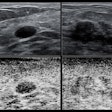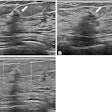More access to medical imaging could potentially improve cancer care in U.S. prisons, according to findings published October 15 in JAMA Network Open.
A team led by Christopher Manz, MD, from Dana Farber Cancer Institute in Boston, MA, identified several strategies suggested by focus group participants (prison medical directors, primary care clinicians, and oncologists -- including 7 radiation oncologists) that could be linked to mitigating disparities in cancer survival for incarcerated individuals. One of these included offering screening tests in prisons, which may improve regular adherence.
“Collectively, participant recommendations amount to a call for correctional health organizations and oncology practices to implement purposive systems that, in effect, advocate for patients who have limited ability to advocate for themselves,” the Manz team wrote.
Cancer is the leading cause of death in U.S. prisons. Individuals who are already incarcerated when diagnosed with cancer have worse survival compared with those who have never been incarcerated at diagnosis. Few prior studies have investigated how cancer care is delivered in prisons.
Manz and colleagues performed a companion study, also published in JAMA Network Open on October 15, that identified barriers to care in prisons. They interviewed experts from 16 U.S. prison systems, finding that barriers included challenges with care coordination, communication, symptom management, transportation, understaffing, and nontransparent care within prisons.
For the current study, the researchers queried these same 32 experts to identify strategies to improve care within U.S. prisons. One of the strategies consisted of offering screening tests in prisons to increase adherence.
One example the team highlighted came from a medical director who suggested installing a mammography unit within prison health systems.
“A lot of people don’t want to do [mammography outside of prison] because they’re embarrassed by [being shackled and wearing orange jumpsuits in public]… So as much as we can bring in the mammography unit [into the prison, as we did] more than 10 years ago, it just increased the compliance of patients enormously,” the director said.
The study participants also said portable imaging could improve screening rates by eliminating barriers to care coordination and transportation. And for tests that must occur outside of prisons, the team highlighted that preplanned screening improves coordination with security and transportation teams.
The participants also identified that “clear, enforceable” standards for cancer screening are needed in prisons. They added that these standards need to be incorporated into contracts with correctional health organizations. They also highlighted the importance of applying the U.S. Preventive Services Task Force guidelines and liver cancer screening.
Other strategies focused on communication, symptom management, patient-centered care, and cancer treatment. The team highlighted a comment from a radiation oncologist who called for improved social support for incarcerated individuals.
“Allowing [patients] the opportunity to have one person … to join the consultation and hear it, they deserve that because it’s a lot of information,” the radiation oncologist said. “Not everyone has the same education level, and you’re throwing out words at them that they’ve never heard before that are oncology terms.”
The study authors called for future studies to test strategies to overcome barriers to care and reduce survival disparities tied to incarceration.
Read the full study here.




















